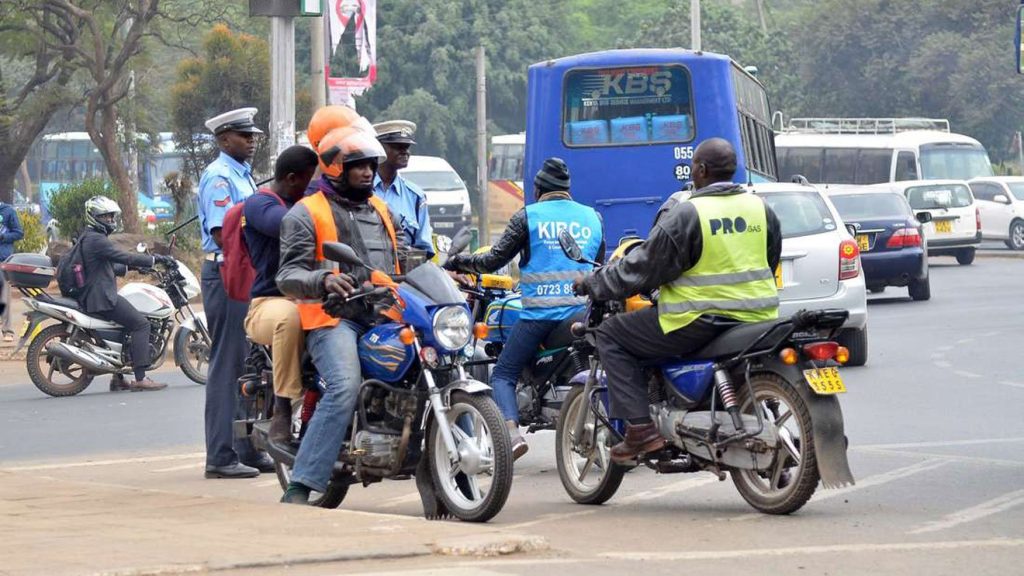By Patricia Mollyne Mataga
Boda boda industry is one of the booming sectors in the country today. It has created massive employment opportunities for not only the youth but also the elderly across the country.
As of 2018, the National Transport and Safety Authority had documented nearly 1.4 million registered motorcycles in Kenya. This number could as well have doubled by now.
The sector plays a key role in the country’s economic growth.
Data from the Kenya Economic Report 2024 prepared by the Kenya Institute for Public Policy Research and Analysis (KIPPRA) shows that on average most bodaboda operators earn around Ksh1,000 per day each.
This means that the bodaboda sub-sector collectively generates over half a billion Kenyan shillings in returns every day.
Aside from creating jobs for the unemployed and being a key economic sector, the industry has also eased up transport.
Today, one can easily pick a boda boda from any place, unlike in the past when most people relied on matatus and bicycles – which are very slow and unreliable, for long distances.
But that is just about it about the boda boda positives. The sector also has its share of negatives.
Among the negative impacts of the sector is the many accidents associated with it.
Unfortunately, most boda boda accidents are fatal, and if one is lucky, they end up disabled.
The latest statistics from the National Transport and Safety Authority show that one in every three Kenyans who died in road accidents over the past six years was either riding on a motorcycle or was hit by it.
Separate data from the National Police Service reveal that in 17 months, 9,996 people were directly affected by motorcycle crashes. This is for the period between May 2022 to October 2023.
“Based on this data, the most likely outcome for motorcycle users hurt in a crash is to incur a serious injury (56 per cent), the second most likely outcome being death (24 per cent),” reads a report titled “Fare Price: An Investigation into the Health Costs of Motorcycle Taxi Crashes in Kenya” was compiled by the National Helmet Wearing Coalition alongside the Motorcycle Initiative, Transaid, and UK-based FiA Foundation.
Treating victims of boda boda accidents is an expensive affair because of the nature of wounds – some are left with broken legs and hands among others.
Statistics show that it costs a boda boda rider between Sh1,680 and Sh2.8 million to treat motorcycle-related injuries.
Health experts recently warned of a rise in spinal injuries – all linked to the use of boda boda as a form of transport.
According to Dr F. Koech, the Chief Executive Office of Top Hill Hospital in Eldoret, of the total number of patients that visit the facility, up to 60 per cent have back issues while 60 to 70 per cent of surgeries have ailments related to spine injuries.
“Most of these injuries result from motorcycle accidents. It is a worrying trend as before we had motorcycles, we did not have this kind of cases at such a magnitude,” Dr Koech told Nairobi Review.
He is now advocating for the introduction of new policies that will help limit the use of motorcycles in the transport sector – for the sake of Kenyans’ health.
Aside from spinal injuries, the boda boda industry has also been linked to cases of pneumonia.
Using it as a mode of transport exposes one to the risk of the disease that was once common among children and the elderly.
Experts have advised that those using boda boda for transport must wear appropriate clothing that prevents them from being exposed.
While the focus is often on children, pneumonia also affects older adults. Globally, Data from UNIFEC indicates that about 1.1 million in-hospital deaths occurred among older adults due to pneumonia.
With the use of motorcycles likely not to go away anytime soon, there is a need for proper legislation to be in place to curb cases of accidents and other related health risks for both the order and the customer.





